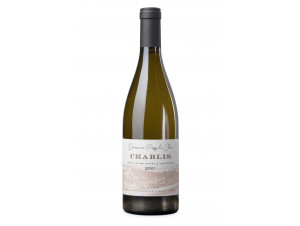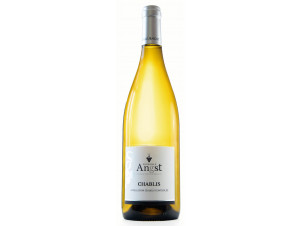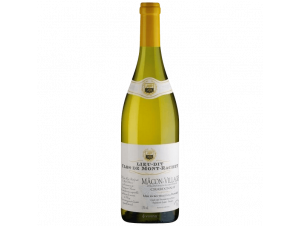You have no items in your shopping cart.
Wine Bourgogne
Burgundy and its incredibly complex terroir. The benchmark region for Pinot Noir, it produces varied whites and excellent reds, marked by the diverse climates of its five subregions. Read more on Bourgogne
-
Top Selling-25%
-
Top Selling-19%
-
Top Selling-27%
- -19%
- -25%
- -25%
- -25%
- -26%
- -19%
- -25%
- -34%
- -25%
- -25%
- -36%
- -26%
- -25%
- -19%
- -19%
- -27%
Region Bourgogne
The History of Wine in Burgundy
The territory of Burgundy has evolved over time. Several million years ago, it was below sea level and this region still expresses traces of this period in the form of clayey-limestone soils, rich in marl and karstic elements.
As early as the Gallic period, even before the arrival of the Roman conquerors, large quantities of wine were undoubtedly produced in the region where many remains of traditional cellars have been found in dwellings. Once the conquest had begun, the Roman Empire was quick to recognize the merit of Burgundy in terms of wine production and the Emperor Domitian even went so far as to make rip out part of the vines in 92, for fear that it would overshadow Roman viticulture. This edict having been annulled in 280, the production of Burgundy wine resumed more and more beautifully, then carried by the advent of Christianity.
Around the year 900, the Benedictine monks are the main landowners of the region. But it was the Cistercians who, two centuries later, began to cultivate the vines with particular attention. The Cistercians having taken a vow of poverty, put themselves to hard work and wished, that through their efforts they would come closer to God. In search of ever more demanding work, they produced Burgundy wine by carefully cultivating the rocky hillsides of the region and fervently studying the influence of growing conditions on the wine. The Cistercians took notes, kept records and intellectualized the process until they introduced the notion of terroir and created the Clos Vougeot, the first clos de vigne bourguignon. The latter is still in operation today. The Dukes of Burgundy took over from the clergy in the 14th and 15th centuries, conducting several experiments to try to improve the quality of Burgundy wine. In 1395, Duke Philippe forbade the cultivation of the Gamay grape variety, preferring instead the Pinot Noir, which was very popular at the time. He also forbids the winegrowers from spreading manure in the vineyards. The yields increased to the detriment of the aromas.
Following the French Revolution, the lands of Burgundy, then belonging to the Kingdom of France or, more particularly, again to the clergy, were sold to private owners. A few generations later, the Napoleonic Code required the redistribution of land among the heirs. The properties were thus split up so that it is common today to see a dozen individuals sharing the ownership of a château and its land. In the 20th century, diseases having caused great devastation in the vineyards, some winegrowers did not hesitate to blend their terroir wines with wines from other regions. The scandal encouraged Burgundian winegrowers to organize themselves by creating the first cooperative cellar in Burgundy in order to fight against these frauds. Founded by Abbot Balitran, priest of Poinchy, the Chablisienne brings together passionate winegrowers who wish to preserve the letters of nobility of their production. A similar consortium was created in the Côte-d'Or in 1930, when the owners revolted against the purchase of Burgundy wine in bulk from the trade as it began to be practiced.
From then on, the Burgundian wine growers made it a point of honor to bottle their wine themselves, and their efforts to maintain a high quality production resulted in the recognition of several terroirs in the AOC appellation, the very first being Morey Saint-Denis..
The geography of the Burgundy region
The Burgundian wine-growing territory does not correspond exactly to the limits of administrative Burgundy. The Rhône, where Beaujolais is produced, is for example officially attached to the Burgundian vineyard, but stands out from it by the uniqueness of its terroir and the fact that the Gamay grape variety is practically the only one grown there.
Geology
At such a latitude, sunshine, and therefore exposure, is the most important element in the choice of the plots of land from which the vineyards are made up. The geological characteristics induced by the presence of ancient rivers are also taken into account in the two large areas on which the Burgundy vineyards are spread.From the côte de Nuits to the Beaujolais region, a series of limestone plateaus supported on a fault line for nearly two hundred kilometers form what is called the eastern facade of the vineyard. During the Tertiary era, the tectonic fault system collapsed at the level of the Saône ditch. The rugged nature of the ditch, which can still be seen today, is due to the erosion that followed and the presence of rivers that flow down towards the Saône. Over time, the Bresse ditch (or Saône ditch) has filled with sediment until it forms a plain to the east and limestone or granite reliefs to the west. The difference in elevation is less and less important from the south to the north.
This zone encompasses the Beaujolais, Mâconnais, Côte Chalonnaise and Côte d'Or. In Beaujolais, the plain is in direct contact with its crystalline granitic bedrock, which makes it a particularly interesting area for vine growing, especially where the accumulated scree forms a satisfactory thickness of decomposed granite, known as "rotten rock". This sandy and acidic mixture ensures optimal drainage.
The Mâconnais , on the other hand, is formed by a series of geological boulders oriented towards the Saône. Having partially preserved their sedimentary cover dating from the Triassic and Jurassic periods, these blocks present slopes that are both very jagged but also almost perfectly aligned over nearly fifty kilometers, from Fuissé to Tournus.
The La Côte Chalonnaise is not as rigorously drawn, and the limestone framed panels that make it up date from the Jurassic period. To the north, it leans towards the Saône plains, and to the south, it faces the Mâconnais mountain ranges, which lie further west, slightly below.
Finally, the Côte d'Or is made up of a fault relief separated between the côtes de Nuits and those of Beaune. Perfectly following the break that divides the limestone plateaus and the Bressan ditch.
The other large area of the vineyard corresponds to the territories where the vineyards of Chablis and Pouilly-sur-Loire are cultivated: the Upper Jurassic coast in Lower Burgundy. This Chablisien and Auxerrois hillside slopes slightly towards the Parisian basin, and is made up of two distinct geological formations: marls and marl-limestones of Kimmeridgian age and the Barrois limestones, dating from the Tithonian age.
Climate
Burgundian winters are cold and summers are hot, often hit by hailstorms that can be very destructive. This contrast typical of a semi-continental climate brings particularly harsh winters to the hills of the Châtillonnais, Auxois and Morvan which are slightly higher up. In the Saône valley, temperatures are less extreme thanks to a more sheltered situation. In the Chablisien, it is the spring frosts that sometimes do damage.Precipitation is fairly regular and the relief ensures a good distribution. Only the part of the vineyard located beyond the Arrières-Côtes receives less rain since the latter tends to be retained by the relief.
The orientation of the plots plays a predominant role in their productivity, the south and south-east exposures being the most interesting. The dreaded westerly winds are also avoided as much as possible in this northern region, which gives a primordial place to the vintage.
Burgundy Grape Varieties
The Pinot Noir, native to the region, alone represents 34% of the grape varieties used and is present in 29% of the total Burgundy wine production. This vine produces a red grape whose complexity of character stands out particularly well when grown on clayey-calcareous soils.
The other red grape variety of Burgundy, the Gamay, represents only 10% of the vineyard since it has historically been somewhat sidelined. The white wines of Burgundy stand out by the great generosity offered by the Chardonnay grape variety on these lands favoè§uyhij,n u§glny rable to its cultivation. It represents 48% of the totality of the vines and is found in 68% of the total production.
Available in white, blanc de blancs, blanc de noirs or rosé, a Crémant is also added to the list of those for whom the purchase of Burgundy wine is to be combined with a desire to discover a sparkling wine which can vary according to the marriages of which it is the fruit. The Crémant de Bourgogne is indeed made from all the grape varieties present in the vineyard, including Pinot Gris, Sacy or Melon, also typical of the region.
Burgundy wine appellations
Les AOC Régionales
The regional appellations divide the vineyards of Burgundy into six main geographical areas and allow the classification of wines according to certain characteristics, notably their grape varieties. More than half of Burgundy's wine production benefits from one of the following regional AOCs.The AOC Burgundy
Concerns wines produced in 54 communes in the Yonne department, 91 communes in Côte-d'Or and 154 communes in Saône-et-Loire. It has 14 complementary geographical appellations called "Bourgognes Identifiés". The white wines of the appellation are Chardonnays with a crystalline robe and nuanced, mineral and undergrowth accents in the Yonne. In Côte-d'Or, they are sweeter and have honeyed aromas reminiscent of hazelnut. In Saône-et-Loire, floral notes give this Burgundy wine its delicate character. In red, the wines of the Burgundy appellation present a purple color dress tending towards ruby and forest fruit aromas on a sweeter background of cooked prune and musky nuances.L'AOC Bourgogne Aligoté
Is reserved for white wines from the Aligoté grape variety and produced in Burgundy. The Aligoté Burgundy wine is exclusively white and made from an old and recognized eponymous grape variety, even if it represents only 6% of the grape variety. Very greedy and energetic, it has a golden and clear robe which reveals a bouquet of lemon apple with floral accents.L'AOC Bourgogne Mousseux
Is produced on several vineyards, but only represents an area of 1.10 hectare. Although confidential, this appellation of controlled origin is highly prized and is historically present in the region. Made from Pinot Noir and Gamay Noir, these fruity wines vary according to the concentration of the grape varieties. Powerful and aromatic, their red fruit notes are refreshing and go well with the pleasant bubbles of this surprising beverage.L'AOC Passe-tout-grains
Is reserved for red and rosé wines produced within the Burgundy appellation area. The process consists in mixing a minimum of 1/3 Pinot Noir and a maximum of 2/3 Gamay before vinification to obtain a wine that varies according to the chosen concentration. The deep robe with mauve and fuchsia tones reveals an unexpected, almost lively freshness that the Pinot soothes by bringing its very appreciable softness.AOC Coteaux Bourguignons Produced within an appellation area extending over 54 communes in the Yonne, 91 communes in Côte-d'Or, 154 communes in Saône-et-Loire and 85 communes in the Rhône is subdivided into two sub-appellations: Coteaux Bourguignons Rosés and Coteaux Bourguignons Clairet. The reds and rosés of the appellation are made from Pinot Noir, Gamay Noir à jus blanc or César. The whites include various proportions of Chardonnay, Aligoté, Melon de Bourgogne, Pinot Blanc and Pinot Gris. The purchase of Burgundy wine from this appellation is always a pleasure for those who like to discover old grape varieties, but not always sufficiently highlighted today.
L'AOC Crémant de Bourgogne
Produces a sparkling wine elaborated from basic wines (or still wines) according to a traditional method. The grape varieties used for these white and rosé wines are, in the first category, Pinot Noir and Chardonnay and, in the second category, Gamay, Aligoté, Melon and Sacy. The resulting crémants are fresh and lively when they are still young, but know how to acquire maturity with age.L'AOC Mâcon
Concerns only wines that do not already bear the name Villages or the name of their own commune. It includes wines harvested within the appellation area Mâcon Villages, which includes 27 identified communes, 11 of which are outside the districts of this city. The Burgundy wines of the Mâcon appellation are available in white, with splendid silvery reflections on a white to straw-yellow robe revealing aromas of broom, honeysuckle, acacia and white rose accompanied by refreshing notes of citrus fruits and some hints of pine and fennel. These are dry wines, but characterized by a certain fruity roundness. In red, the wines of the AOC Mâcon are a beautiful cherry red often tending towards dark ruby or garnet nuances. The Gamay also sometimes lends them its purple hues. The aromas of wild berries dominate and are adorned with a few accents of undergrowth and a few peppery accords. They are wines full of joy and soften with age.Les AOC Villages
There are 44 appellations Villages for the wines of Burgundy thanks to which the commune of origin is highlighted. Far from being marginal, the production represents 34% of the total quantity of wine in Burgundy and concerns remarkable terroirs located at the extremities of the slopes of several hillsides. Within the AOC Villages, there are two production areas grouping together other communal appellations: that of Côte-de-Beaune-Villages and that of Mâcon. These sub-regional appellations complete a hierarchy that some consider complex, while others appreciate the precision.Les Premiers Crus
The wines classified as Premier Cru belong to the second most prestigious category, immediately behind the Grands Crus. Representing 10% of the total production, the Premier Cru qualification is added to the communal appellations and must be followed by the name of a climate classified among the Climats Premier Cru, of which there are 562. These climates are attached to one of the 26 Burgundy wine appellations. The selected terroirs are considered to be the most exceptional. They are usually the slopes of the Chablisien, the Côte de Nuits, the Côte de Beaune and the Côte Châlonnaise which benefit from the best exposure.AOC Grand Cru wines
The 33 AOC Grand Cru from the Burgundy region make up 1.5% of the production. The Côte-d'Or produces thirty-two of them, while the Yonne, with its seven Chablis Grand Cru climates, represents the last one. Only ten communes have the privilege of producing these exceptional climates. The plots in question are located on the Côte de Nuits, in Chablis or on the Côte de Beaune, and benefit from microclimates particularly adapted to the grape varieties grown there. The prestigious Grand Cru appellation controls the quality of its wines in each vintage.Exporting and Buying Burgundy Wines Internationally
The purchase of Burgundy wines internationally is particularly well valued, with Côtes de Nuits and Beaune wines representing a third of the region's exports. Between 2017 and 2018, the purchase of Burgundy wine by North America took off at a prodigious rate, with an increase of 9.5% in volume and 8% in value. Hong Kong is also fond of Burgundy wines, as the increase in Burgundy wine purchases for this country amounts to a further 24.5% in terms of value. Sweden and Finland are also following this trend.
The European market is more timid and shows slight declines, but it should be noted that the total export turnover was at its highest in 2018. The magnificent wines of Burgundy undoubtedly deserve the infatuation they receive. One of the most prestigious wine regions in the world, the cradle of the irreplaceable Pinot Noir and Chardonnay, Burgundy is a surprising region. The culture of excellence that has led winegrowers, over the centuries, to refine their techniques and refine the quality of their grape varieties has created absolutely unique climates on perfectly controlled terroirs. Diversified but familiar, the wines of Burgundy possess a generous, elegant and delicate character. With a prodigious aromatic richness, these wines transport us between worlds of fruity freshness, depth with the scent of undergrowth, and floral intensity. The subtlety of their dimension makes the fame of these magnificent beverages.
The incredible palette through which they express themselves reflects the sumptuous mosaic of their different climates and invites you to embark on the discovery of these wines with a history. Red, rosé, white or sparkling, Burgundy wine can be adapted to all desires and preferences.
Good to know
Winemakers
Listed 1595 winemakers
Production
1.5 million hectolitres
Area
28715 ha
Soil and subsoil
Rich and complex, at the intersection of influences from the continent, the Mediterranean and the ocean
Grape variety
Reds and rosés : Pinot Noir (34%), Gamay (10%), César
Whites : Chardonnay (48%), Aligoté (6%), Sauvignon, Pinot Beurot, Sacy, Melon
Bourgogne appellations









































 TWIL - Achat de Vin
TWIL - Achat de Vin


